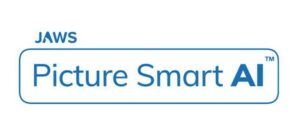Vision-Friendly Work Environments: Tools and Technologies for Enhanced Employee Eye Health

Creating a vision-friendly work environment is essential, not just for compliance but for fostering inclusivity and optimizing productivity. As we observe Workplace Eye Wellness Month, it’s crucial to focus on the importance of maintaining eye health in professional settings, where digital screens and documents dominate most of our tasks. With increasing reliance on technology, digital accessibility must be prioritized to accommodate individuals experiencing vision loss or challenges related to aging. At New England Low Vision and Blindness, our mission extends beyond providing leading-edge assistive technologies and training; it’s about ensuring comfort and efficiency for visually impaired professionals in their workplace.
Advancements in assistive technologies have transformed the way individuals with visual impairments engage with work environments. Technologies like screen magnifiers, voice labeling systems, and screen reading software have become indispensable tools for many professionals. While aging may present new challenges to vision, our approach combines the latest technology with tailored training, so that vision-friendly workspaces are not a luxury, but a standard. Our commitment is to bring hope and practical solutions to those who are visually impaired, equipping workspaces with the tools and knowledge necessary to support eye wellness every day.
Embracing digital accessibility in the workplace does more than just expand opportunities for individuals with vision loss; it enriches our workforce as a whole. Incorporating these advanced devices into everyday practice is pivotal in developing an inclusive culture that values the contributions of all employees. Our team is dedicated to training and equipping organizations with the tools necessary to create environments conducive to the eye wellness of their staff. With each individual empowered to perform to their utmost potential, the collective success of a team is inevitable.
Understanding Vision Impairment
It’s essential to understand the complexities of vision impairment and how it affects individuals. Technology plays a crucial role in creating accessible work environments for the visually impaired, offering hope and independence.
Types of Vision Impairment
Vision impairment can range from mild vision loss to complete blindness. Low vision is a term commonly used to describe visual impairments that are not correctable by standard glasses or contact lenses and can include various conditions such as:
- Partial sight: Limited vision which impairs the ability to perform everyday tasks.
- Blindness: The state of lacking visual perception due to physiological or neurological factors.
Each type of impairment affects visual acuity and contrast sensitivity, which are crucial for functional vision in work environments.
Impact on Daily Activities
For individuals with vision impairment, even simple daily activities can pose challenges. The degree of difficulty varies based on the person’s level of functional vision. Common tasks impacted include:
- Reading and understanding written material
- Navigating workspaces
- Operating computers and other job-related technology
The workplace demands can create barriers for the visually impaired, making it imperative to have access to supportive tools and environments.
The Role of Technology in Accessibility
Assistive technology is instrumental in breaking down these barriers. As a provider and trainer in assistive technologies, we often work with devices and software designed to aid those with vision impairments. These include:
- Screen readers: Software that vocalizes or Braille displays the content on a computer screen.
- Magnification devices: Tools that enlarge text and images to make them more visible.
Technologies harnessing machine learning algorithms and other advancements can significantly enhance the quality of life for the visually impaired by supporting accessibility in both personal and professional landscapes.
Designing for Accessibility
Creating accessible work environments involves a dedicated focus on design principles that ensure all employees, including those with visual impairments, can work effectively. Our commitment to these principles reflects in our approach, aligning with March Awareness Month: Workplace Eye Wellness.
Principles of Accessible Design
Universal Design: We embrace the philosophy of designing all products and environments to be aesthetic and usable to the greatest extent possible by everyone, regardless of their age, ability, or status in life. This fosters an inclusive workplace culture and improves the overall work experience.
Accessibility Standards: Following established guidelines such as the Web Content Accessibility Guidelines (WCAG) ensures our designs are accessible. These standards serve as a baseline for creating environments that support diverse visual capabilities.
Implementing Color and Contrast
Contrast Ratio: Employing a high contrast ratio is crucial for legibility. A contrast ratio of at least 4.5:1 for normal text and 3:1 for large text is recommended.
Color Selection: We are mindful in selecting colors that can be distinguished easily by all users. This supports individuals with color vision deficiencies and aids in creating a vision-friendly environment.
Typography and Readability
Font Choices: Selecting fonts that maximize legibility and readability is essential. We prefer fonts that are sans-serif, as they tend to be more legible for reading extensive text.
Font Size and Spacing: Text size and spacing matter for clarity. We ensure that font size is not below 12pt for digital content and that adequate spacing is provided between lines and characters.
By integrating these design components into our work environments, we enhance the accessibility and productivity for all employees, particularly supporting those with visual impairments. This approach is a reflection of our expertise as a leading assistive technology provider and trainer, ensuring that our resources bring hope and practical assistance to people with vision challenges.
Assistive Technologies for Vision
In the spirit of Workplace Eye Wellness Month, we discuss essential assistive technologies that help create a more accessible and efficient work environment for individuals with visual impairments.
Screen Readers and Narrators
Screen readers are essential for individuals with visual impairments, as they convert text displayed on a computer or a smartphone screen into speech. A prominent example is the Windows Narrator, a built-in feature that reads aloud text on the screen and describes events like error messages, so users can navigate their computers with less strain on their eyes. Similarly, dedicated third-party software provides this functionality with a variety of voices and languages, enhancing accessibility for a wider audience.
Magnification Tools
For those who benefit from enlarged text and images, magnification tools play a crucial role in easing eye strain. These tools can be software-based, allowing users to zoom into areas on their smartphone screens or computers with simple gestures or keystrokes. Standalone devices with powerful cameras also exist, which can magnify printed text for easier reading.
Technological Innovations
The field of assistive technology is ever-evolving with leading-edge innovations designed to support professional success. From sophisticated optical character recognition (OCR) technology that translates printed text into spoken words to advanced assistive technology products with integrated AI, these solutions are paving the way for unprecedented access and independence. Our commitment is to provide the most advanced resources and training to Bring Hope and improve the quality of life for people who are visually impaired.
Adaptive Work Environment Strategies
Creating a vision-friendly work environment is essential not only for comfort but also for productivity and wellness. We focus on providing leading-edge solutions to enhance workplace inclusivity for individuals with visual impairments. Here’s how we address common workplace challenges with adaptive strategies.
Ergonomic Adjustments
We understand that a one-size-fits-all approach does not work for workplace ergonomics. Individual assessments ensure that each workstation is tailored to meet the unique needs of every employee. By incorporating adjustable monitor arms and selecting appropriate furniture, we foster an environment where individuals can work without straining their eyes or bodies. Ensuring the right height and angle for monitors can significantly reduce the risk of discomfort and vision strain.
Lighting and Glare Reduction
Lighting plays a pivotal role in creating a visually ergonomic workspace. Too much brightness can cause glare, which is a common issue for those with low vision. We recommend installing task lighting that allows customization of brightness levels to suit various tasks and individual preferences. Additionally, we provide access to anti-glare screens and filters, which are instrumental in reducing glare from monitors and creating a more comfortable viewing experience.
Workspace Organization for Accessibility
Organizing a workspace to accommodate accessibility needs is vital for individuals with visual impairments. We ensure that the necessary tools and technologies are within arm’s reach and that the environment is free of unnecessary clutter. Labeling in large print and braille, along with cable management solutions, are small but impactful considerations that contribute to a more accessible and navigable workspace.
Digital Accessibility in the Workplace
In an era where digital interfaces are integral to professional environments, ensuring that all employees have equal access to technology is not just an ethical imperative; it’s a legal one. Our focus on enhancing digital accessibility fosters a vision-friendly workplace, crucial during March Awareness Month: Workplace Eye Wellness.
Accessible Software and Platforms
Microsoft 365 has set a commendable standard for incorporating digital accessibility into its suite of tools. Features such as screen reading, keyboard shortcuts, and speech recognition not only comply with Web Content Accessibility Guidelines (WCAG) but also assist in creating a seamless work experience for people with visual impairments. As a leading provider, we advocate for software designed with accessibility at its forefront, ensuring that all staff have the tools required to excel.
Compliance with Legal Standards
Adhering to the Americans with Disabilities Act (ADA) is a non-negotiable aspect of workplace technology integration. Legally, all digital resources must be accessible, which includes following WCAG for online content. Our supports and services include guidance to ensure that your company’s digital landscape meets these necessary regulations, protecting both your staff and your business interests.
Educational Resources and Support
We provide critical educational resources and support to organizations aiming to enhance their digital accessibility. Our trainings encompass a range of topics, including the effective implementation of assistive technologies and best practices for creating accessible digital content. Through our leading-edge technologies and expertise, we bring hope and enable a more inclusive work environment.



